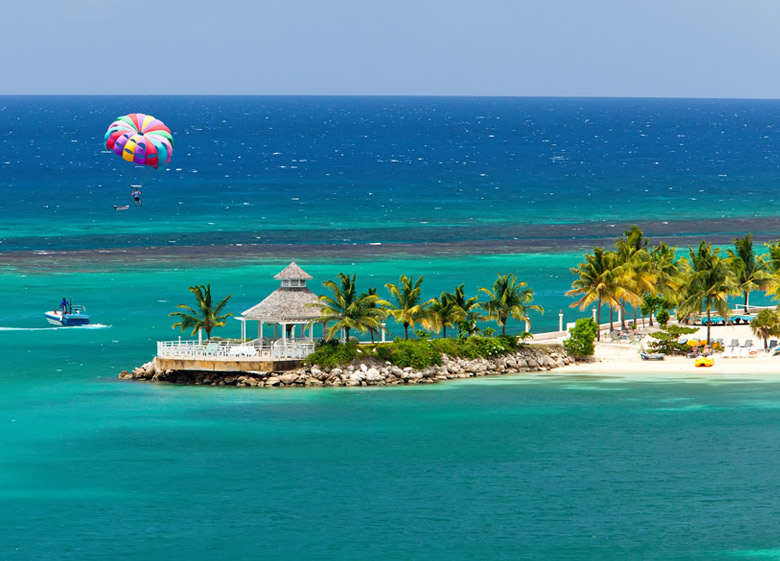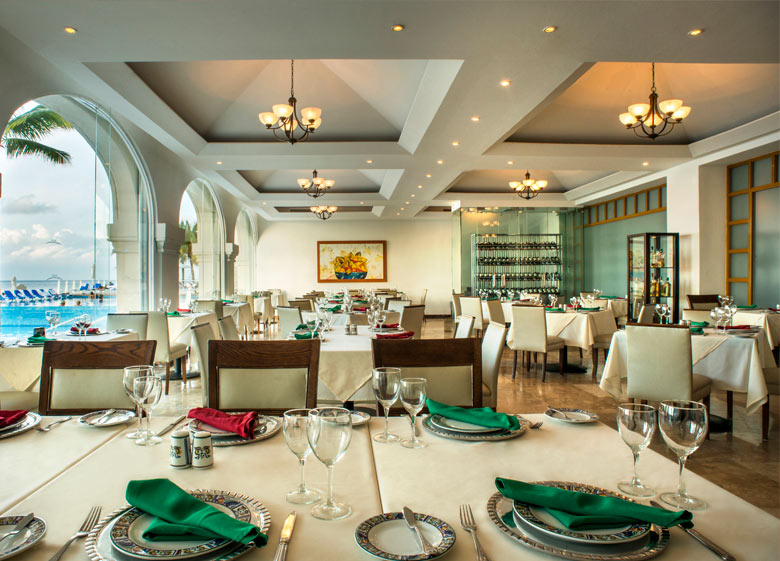Stand Up Paddle Boarding Broken Down in 6 Steps

Stand Up and Be Heard
By now, stand up paddle boarding (SUP) has ingrained itself in pop culture well beyond the bounds of water sports, having long past the phase of fad on its way to becoming the fastest growing non-traditional sport. The number of people who paddle board and overall number of outings is in the millions and participation continues to float upstream every year.
If you don’t count yourself among those who have already tried paddle boarding in a river, lake or the ocean, then your best chance could come while on vacation. Hotels and resorts in coastal and tropical climates increasingly make SUPs available for fitness oriented and active guests. At Moon Palace Cancun or Moon Palace Jamaica, they are among the most popular activities and available for use at no additional charge.
That’s great for you. But just because the sport may seem simple as well as cool, there are still some things you should know going in. Before you stand up and paddle – and try something advanced like yoga on a SUP – check out these 6 tips that will make your experiences more safe and fun.
Pick Right Equipment, Gauge the Elements
Pick The Right Board and Paddles
Like when starting any new sport or outdoor activity, the equipment you use is critical to building skills and enjoyment. A couple hard fast rules to keep in mind: The buoyancy of paddle boards varies according to material and whether they are inflatable or not. More buoyant and wider, which also increases stability, is better for beginners. As far as paddles, make sure they are about 5-10 inches taller than you are.
Figure Out Direction of Wind an/or Currents
Even before floating out into your adventure, get a sense of the direction of the wind and ask your guide or locals if there are any currents to keep in mind. While going with the wind or a current may make paddle boarding seem a breeze, when you turn around and go directly into them you can find yourself out of breath and without energy to finish your outing. At some resorts, like Moon Palace Jamaica, guests can take out paddle boards only when the wind is moderate or less and with relatively calm seas.

Be Safe and Start Slow
Use a Life Jacket or Leash, or Both
Sure, you can always lay atop a paddle board when seas get rough but when you fall off – it happens to all first timers – you want to make sure you are safe and that the board doesn’t get away from you. In still waters, that may be easy enough, but in rough seas and with waves it can be quite challenging.
Start on Your Knees, Look to the Horizon
The grace and power with which expert paddle boarders move through the water might give you the impression this sport is as easy as drinking a glass of water. Don’t be fooled. Start slow and get on your knees to gain your balance and familiarize yourself with the paddle board before you stand up. Otherwise, prepare to fall in the drink rather than take one.
Once you have gotten your balance and paddle rhythm, look ahead instead of down at your feet or water below. It’s harder to keep your balance if you are looking down, while focusing on what is coming ahead helps keep you in a comfortably balanced state.
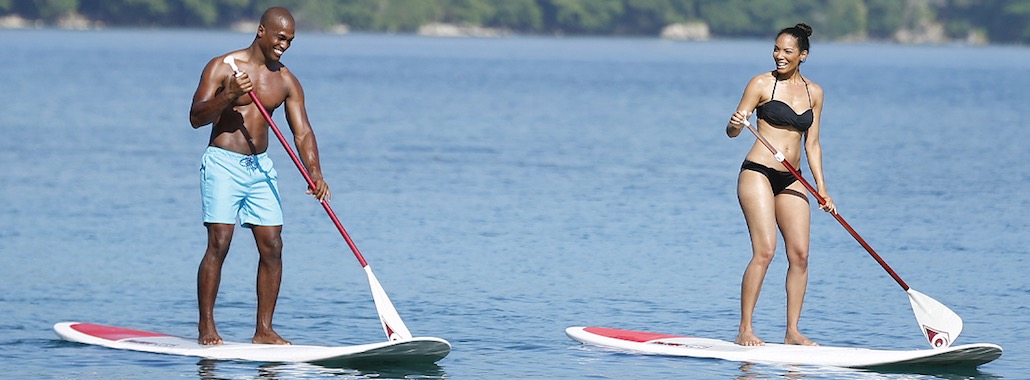
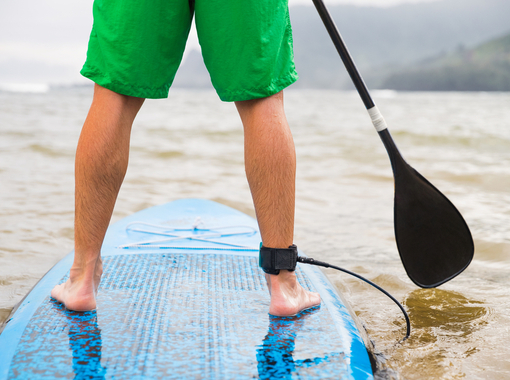
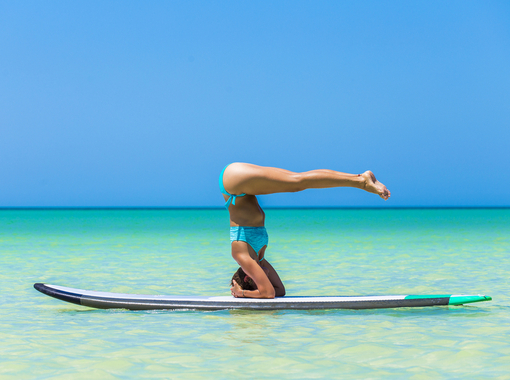
Alternate and Use Your Core
Alternate Sides
Like with rowing a boat or kayaking, alternate paddling on your left and right side, to most efficiently move in a straight line. If you keep paddling repeatedly on one side you’ll find that you will start turning toward that side, until you end up doing a complete 180 degree turn. Take two to four paddle strokes per side before switching when going in any one direction.
Use Your Core to Generate Paddle Power
Although your arms are what is holding the paddle, in order to best move through the water and not exhaust yourself in the process make sure to use your core (abs, chest, back) muscles and rotate your hips to help generate power. As well as providing a more efficient stroke, flexing your core while using it to help you balance provides a fantastic workout.



